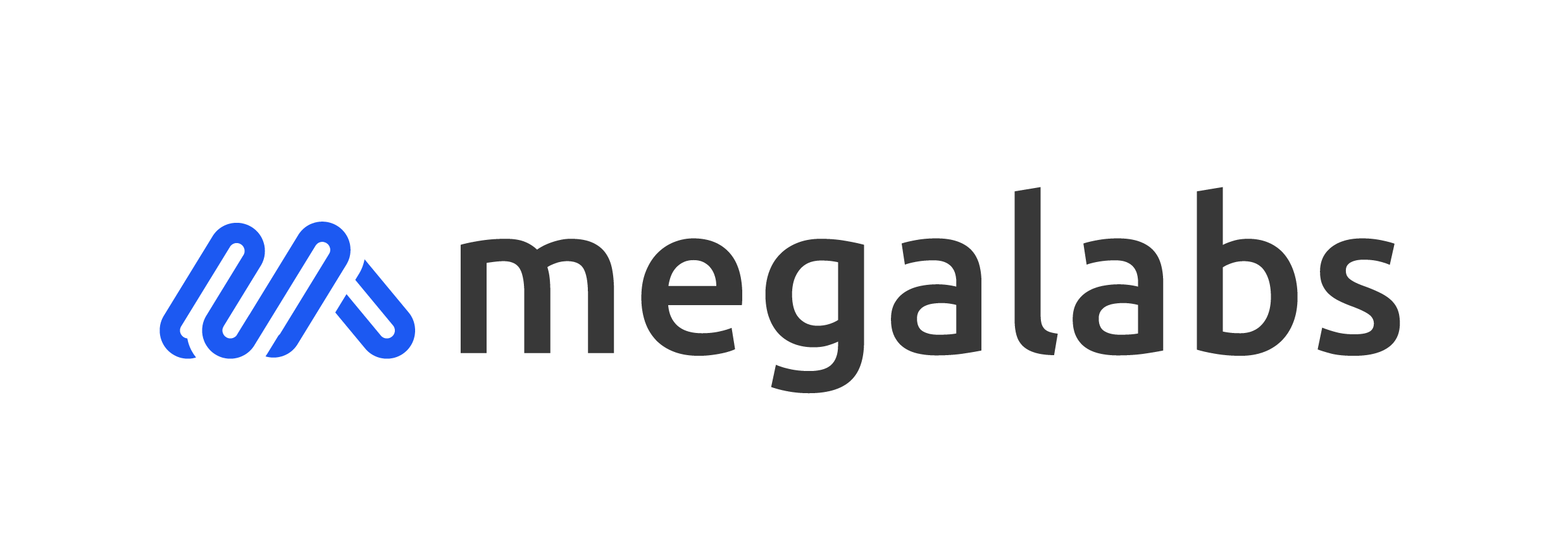In today’s world, we are experiencing a technological paradigm shift in which AI-driven solutions are becoming increasingly important for businesses to stay competitive, improve productivity, and increase revenue. So, are you considering starting an AI project for your business?
Below, we will delve into the crucial aspects of initiating and managing AI projects within your organization. By the end of this article, you will have gained valuable insights and practical tips to help you embark on your own AI journey and harness the potential of this game-changing technology to propel your business forward.
Key Factors to Consider Before Initiating an AI Project
We will initiate the article by mentioning key factors to evaluate before starting an AI project for your business. These factors include identifying your business goals and evaluating AI’s contribution, assessing if you have enough and valuable data, considering your resources, and considering the potential risks to your organization or customers.
1.Business Goals
Now, let’s talk about the importance of identifying your business goals before starting an AI project.
Identifying business objectives
Before embarking on an AI project, it is crucial to clearly define your business objectives. Start by considering your organization’s overall mission, short-term and long-term goals, and the specific problems or challenges you want to address. By identifying these objectives, you can ensure that your AI project aligns with your organization’s strategic vision and contributes to its success.
Understanding how AI can contribute to achieving those goals
Once you have identified your business objectives, it is essential to understand how AI can help you achieve those goals. Research and analyze the potential applications of AI in your industry, and consider how AI can be used to enhance efficiency, improve decision-making, or create new products and services.
Additionally, examine successful AI implementations in similar organizations to gain insights into how AI can be effectively leveraged to meet your business goals.
To fully comprehend the potential of AI in achieving your business goals, consider the following:
1. Identify areas where AI can automate repetitive tasks, freeing up human resources for higher-value activities.
2. Explore how AI can enhance decision-making by providing data-driven insights and predictive analytics.
3. Investigate the potential for AI to improve customer experience through personalized recommendations, chatbots, and other interactive tools.
4. Examine the role of AI in developing innovative products and services that can differentiate your organization from competitors.

2.Data Quality and Relevance
The other key factor to consider is the availability of your data for AI projects.
Assessing Available Data
Data is the foundation of any AI project, and having access to high-quality data is essential for success. Begin by evaluating the data currently available within your organization. This includes both internal data sources, such as customer records, sales data, and operational metrics, as well as external data sources, such as market research, industry trends, and competitor information.
When assessing your data, consider the 4V:
Volume: Do you have enough data to support an AI project?
Variety: Does your data include diverse types of information, such as structured and unstructured data?
Velocity: Can your data be collected, processed, and updated at the required speed for your AI project?
Veracity: Is your data trustworthy and free from errors and inconsistencies?
Ensuring Data is Accurate, Complete, and Relevant to Business Goals
Once you have assessed your available data, it is crucial to ensure that it is accurate, complete, and relevant to your business goals. Inaccurate or incomplete data can lead to flawed AI models and poor decision-making. To ensure data quality, implement data validation and cleaning processes, and establish data governance policies to maintain data integrity.
To ensure that your data is relevant to your business goals, consider the following:
Alignment: Verify that your data sources directly relate to your business objectives and can provide actionable insights.
Timeliness: Ensure that your data is up-to-date and reflective of current business conditions.
Granularity: Check that the level of detail in your data is appropriate for your AI project’s needs.
3.Resources
After identifying a clear business goal and being sure that you have available data, now it’s time to consider whether you have enough resources to implement an AI project successfully.
Evaluating Resource Availability, Including Time, Money, and Personnel
Before starting an AI project, it is essential to evaluate the availability of resources within your organization. The three primary resources to consider are time, money, and personnel.
Time: Assess the time required to complete the AI project, considering factors such as data collection, model development, testing, and deployment. Ensure that the project timeline aligns with your organization’s priorities and goals.
Money: Determine the budget required for the AI project, taking into account costs associated with data storage, computing power, software licenses, and other necessary tools. Also, consider the potential return on investment (ROI) to justify the allocation of funds to the project.
Personnel: Evaluate the availability of skilled professionals within your organization who can contribute to the AI project. This includes data scientists, data engineers, software developers, and domain experts. If your organization lacks the required expertise, consider hiring new talent or partnering with external consultants.

Determining Resource Allocation for AI Project Implementation and Management
Once you have evaluated the availability of resources, the next step is to determine how these resources will be allocated to support the AI project’s implementation and management.
Prioritize tasks and milestones: Break down the AI project into smaller tasks and milestones, and prioritize them based on their importance and alignment with your business goals.
Allocate resources strategically: Assign resources to tasks and milestones based on their priority, ensuring that critical tasks receive adequate support. Be prepared to adjust resource allocation as the project progresses and new challenges arise.
Monitor resource utilization: Track the utilization of resources throughout the project to ensure that they are being used efficiently and effectively. Regularly review the project’s progress and make adjustments to resource allocation as needed to optimize performance and achieve desired outcomes.
Plan for contingencies: Set aside a portion of your resources to address unforeseen challenges or opportunities that may arise during the project. This will help ensure that your AI project remains on track and can adapt to changing circumstances.
4.Risk Assessment
Another important thing to consider before starting an AI project for your business is elaborating on potential risks. In this section, we will list some of the potential risks and give tips to mitigate them.
Data privacy and security
AI systems often rely on large volumes of sensitive data, making data privacy and security a significant concern. Unauthorized access, data breaches, and misuse of data can lead to legal and reputational consequences.
In order to protect sensitive data, implement robust data governance policies, access controls, and encryption techniques. Regularly monitor and audit data handling practices to ensure compliance with data protection regulations.
Bias and fairness
AI models can inadvertently learn and propagate biases present in the training data, leading to unfair or discriminatory outcomes. This can negatively impact customer trust and result in legal and ethical issues.
Conduct thorough data audits to identify and address potential biases in your training data. Implement fairness metrics and monitoring tools to assess and mitigate bias in AI models throughout their lifecycle.

Model interpretability
Complex AI models can be challenging to interpret and explain, making it difficult to understand the rationale behind their predictions and decisions. This lack of transparency can hinder trust and adoption of AI solutions.
To provide insights into the decision-making process of complex models, you can prioritize the development of interpretable and explainable AI models.
Over-reliance on AI
Overestimating the capabilities of AI or relying solely on AI for critical decision-making can lead to suboptimal outcomes and increased risk exposure.
To overcome this risk, encourage a human-in-the-loop approach, where AI serves as a decision support tool rather than a standalone decision-maker. Foster collaboration between AI systems and human experts to leverage the strengths of both.
Regulatory compliance
As AI technologies continue to evolve, new regulations and guidelines may be introduced, requiring organizations to adapt their AI systems to remain compliant.
So, stay informed about emerging AI regulations and guidelines and proactively update your AI systems to ensure compliance. Engage with regulatory bodies and industry associations to contribute to the development of AI governance frameworks.
5.Ethical Considerations
As AI becomes increasingly integrated into business operations, it is essential to consider its ethical implications. Analyzing the impact of AI on various stakeholders, such as customers, employees, and the public, is a critical aspect of responsible AI implementation.
Customers: Assess how AI-driven products and services may affect customer privacy, security, and fairness. Consider the potential consequences of biased recommendations, personalized marketing, and data collection practices on customer trust and satisfaction.
Employees: Evaluate the impact of AI on the workforce, including job displacement, upskilling requirements, and changes in work processes. Consider how AI can be used to support employees in their roles and promote a more inclusive and diverse work environment.
Public: Examine the broader societal implications of AI, such as its influence on income inequality, the digital divide, and environmental sustainability. Consider how AI can be leveraged to address societal challenges and promote the greater good if your project affects a portion of society.
Ensuring Ethical Use of AI in Business Operations
To ensure the ethical use of AI in business operations, organizations should adopt a proactive approach and implement robust ethical guidelines and practices. Some key steps include:
Develop an AI ethics framework: Establish a set of guiding principles and ethical standards for AI development and deployment within your organization. These principles may include transparency, fairness, accountability, privacy, and human-centric design.
Engage diverse stakeholders: Involve a wide range of stakeholders, including customers, employees, and external experts, in the development and review of AI systems. This will help ensure that diverse perspectives are considered and potential ethical concerns are addressed.
Implement ethical AI audits: Conduct regular audits of AI systems to assess their compliance with ethical guidelines and identify potential areas of concern. Use these audits as an opportunity to refine AI models and processes to better align with ethical standards.
Foster a culture of ethical AI: Encourage open discussions and ongoing education about AI ethics within your organization. Provide training and resources to help employees understand the ethical implications of AI and make informed decisions in their work.
Monitor and adapt: Continuously monitor the impact of AI on stakeholders and adapt your AI systems and practices as needed. Stay informed about emerging ethical concerns and best practices in the field of AI to ensure your organization remains at the forefront of responsible AI implementation.

Developing a Comprehensive AI Project Plan
Implementing a successful AI project requires a well-structured plan that addresses key aspects such as project goals, timeline, budget, team composition, and success metrics. This section will discuss each of these elements in detail and provide guidance on how to develop a comprehensive AI project plan.
Project Goals
Defining specific objectives for the AI project is crucial for aligning the project with your organization’s strategic goals and ensuring a clear direction. When setting project goals, consider the following:
Identify the problem: Clearly articulate the problem or challenge that the AI project aims to address. This will help guide the project’s focus and ensure that the AI solution is targeted at addressing a specific issue.
Set SMART objectives: Develop Specific, Measurable, Achievable, Relevant, and Time-bound (SMART) objectives for the AI project. This will help ensure that the project goals are clear, realistic, and measurable.
Align with business goals: Ensure that the AI project’s objectives align with your organization’s overall business goals and priorities. This will help demonstrate the project’s value and secure support from stakeholders.
Timeline
Establishing a realistic timeline for AI project completion is essential for effective project management and resource allocation. To create a project timeline, consider the following steps:
Break down the project into tasks: Divide the AI project into smaller tasks and milestones, such as data collection, model development, testing, and deployment.
Estimate task durations: Estimate the time required to complete each task, taking into account factors such as resource availability, task complexity, and dependencies between tasks.
Set deadlines: Assign deadlines for each task and milestone, ensuring that they are achievable and provide sufficient buffer time for unforeseen challenges.
Monitor progress: Regularly review the project’s progress against the timeline and make adjustments as needed to stay on track.
Budget
Allocating a budget for the AI project is crucial for ensuring that the project has adequate financial resources to succeed. To develop a project budget, consider the following:
Estimate costs: Identify the various costs associated with the AI project, such as data storage, computing power, software licenses, and personnel expenses.
Prioritize expenses: Prioritize expenses based on their importance to the project and alignment with project goals. Allocate funds accordingly to ensure that critical tasks receive adequate financial support.
Plan for contingencies: Set aside a portion of the budget for contingencies to address unforeseen challenges or opportunities that may arise during the project.
Monitor expenses: Track expenses throughout the project to ensure that they remain within the allocated budget and make adjustments as needed to optimize resource utilization.
Team Composition
Identifying team members and roles for the AI project is essential for ensuring that the project has the necessary expertise and support to succeed. When assembling your AI project team, consider the following:
Identify required skills: Determine the skills and expertise required for the AI project, such as data science, data engineering, software development, and domain expertise.
Assign duties: Assign roles and responsibilities to team members based on their abilities and knowledge, ensuring that each team member has a clear grasp of their role in the project.
Foster collaboration: Encourage collaboration and communication within the project team, as well as with external stakeholders, to ensure that the project benefits from diverse perspectives and expertise.
Provide support and training: Provide AI training for your team to help them develop their skills and stay up-to-date with the latest AI technologies and best practices.
Metrics for Success
Determining key performance indicators (KPIs) to measure project success is essential for evaluating the project’s performance and demonstrating its value to stakeholders. To identify success metrics for your AI project, consider the following:
Align metrics with project goals: Develop metrics that directly align with the project’s objectives, ensuring that they accurately measure progress towards achieving the desired outcomes.
Balance quantitative and qualitative metrics: Include both quantitative metrics, such as model accuracy and cost savings, and qualitative metrics, such as user satisfaction and employee engagement, to provide a comprehensive assessment of project performance.
Set targets: Establish targets for each success metric, providing a clear benchmark for evaluating the project’s performance and identifying areas for improvement.
Monitor and report: Regularly monitor and report on the project’s performance against the success metrics, using the results to inform decision-making and guide future project iterations.
By developing a comprehensive AI project plan that addresses project goals, timeline, budget, team composition, and success metrics, organizations can increase their chances of successfully implementing AI projects that deliver meaningful results and drive business growth.

Tips for Starting a Successful AI Project
Successfully implementing an AI project can be challenging, but with the right approach and mindset, organizations can increase their chances of success. This section will provide tips for ensuring a successful AI project, including starting small, seeking assistance, and practicing patience.
Starting Small
Focusing on manageable projects to build experience and success is a valuable strategy for organizations new to AI. By starting small, you can:
Gain experience: Smaller projects provide an opportunity to learn about AI technologies, methodologies, and best practices, building a foundation for future, larger-scale projects.
Demonstrate value: Successful smaller projects can help showcase the potential benefits of AI to stakeholders, securing buy-in and support for future initiatives.
Mitigate risk: Smaller projects typically involve lower financial and operational risks, allowing organizations to experiment with AI without jeopardizing critical business functions.
Seeking Assistance
Utilizing available resources and expertise is essential for navigating the complexities of AI projects. Embrace collaboration and support by:
Leveraging internal expertise: Identify employees with relevant skills and knowledge who can contribute to the AI project, either as part of the core team or as advisors.
Engaging external partners: Collaborate with external partners, such as AI vendors, AI consultants, or academic institutions, to access specialized expertise and resources.
Participating in AI communities: Join AI-related forums, conferences, and networking events to learn from industry experts, share experiences, and stay up-to-date with the latest developments in the field.
Practicing Patience
Recognizing that AI projects require time and patience is crucial for managing expectations and ensuring long-term success. To practice patience in your AI project, consider the following:
Set realistic expectations: Understand that AI projects often involve complex processes, such as data collection, cleaning, and model training, which may take longer than anticipated. Communicate these complexities to stakeholders to set realistic expectations for project timelines and outcomes.
Be prepared for setbacks: AI projects may encounter setbacks, such as data quality issues or model performance challenges. Be prepared to address these issues and adjust your project plan as needed.
Celebrate incremental progress: Recognize and celebrate incremental progress throughout the AI project, acknowledging the achievements of the team and maintaining motivation.
By following these tips, organizations can increase their chances of successfully implementing AI projects and harnessing the transformative power of AI to drive business growth and innovation.

